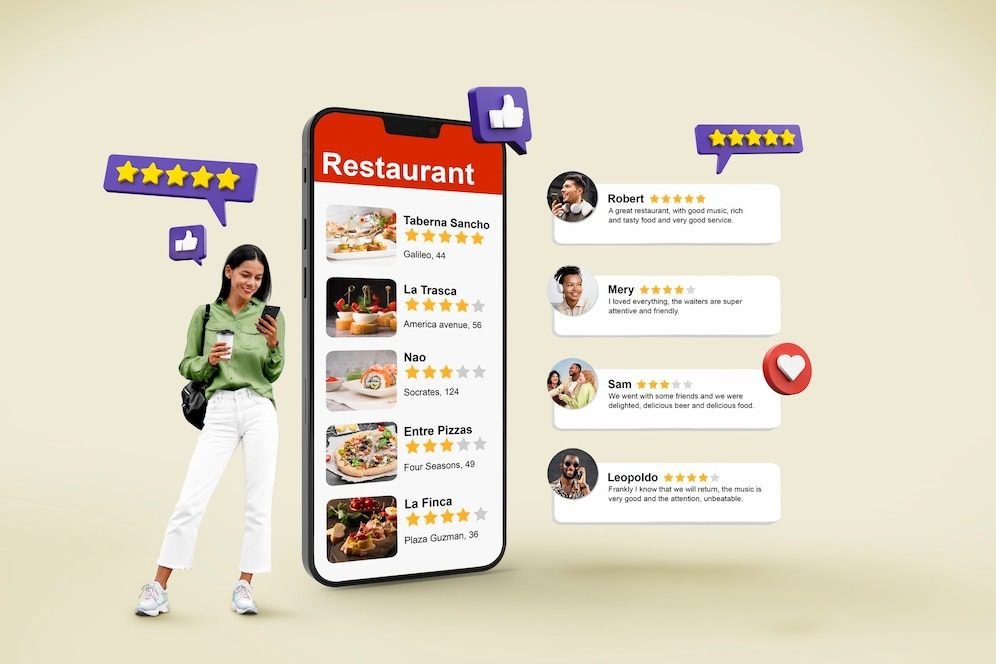In today’s culinary scene, where trends come and go with the swipe of a smartphone, staying competitive as a restaurant can feel like navigating a maze. With diners spoiled for choice and expectations higher than ever, establishments must adapt to the rapidly evolving dining industry or risk being left behind. Here is your comprehensive guide to help restaurants not only survive but thrive in the modern dining industry and keep you at the forefront of the business model.
1. Embracing Technology for Efficiency and Innovation
Technology has become an indispensable tool for restaurants looking to streamline operations and enhance the dining experience. From online reservation systems and digital menus to kitchen automation and inventory management software, leveraging technology can significantly improve efficiency and productivity. By embracing innovations such as contactless payment options and mobile ordering apps, restaurants can cater to the preferences of tech-savvy diners and provide a seamless dining experience from start to finish.
But how can restaurants harness the power of technology to stay competitive in the modern dining industry? By embracing the rise of online food ordering for restaurants, establishments can tap into a lucrative revenue stream and reach a wider audience beyond their physical location. With the convenience of online ordering platforms and delivery services, diners can enjoy their favorite meals from the comfort of their homes, expanding the restaurant’s reach and boosting sales.
2. Elevating the Dining Experience Through Personalization

Customization is king, so restaurants must go the extra mile to cater to the unique preferences and tastes of their patrons. By harnessing data analytics and customer insights, establishments can create personalized dining experiences that resonate with their target audience. Whether it’s offering customized menu options based on dietary restrictions or sending personalized promotions to loyal customers, personalization fosters a sense of connection and loyalty that keeps diners coming back for more.
By harnessing the power of customer relationship management (CRM) systems, establishments can track customer interactions, preferences, and feedback to tailor their offerings and marketing efforts accordingly. From sending targeted email campaigns to offering exclusive perks and rewards, personalized experiences make diners feel valued and appreciated, fostering long-term loyalty and advocacy.
3. Online Reviews and Reputation Management

Online reviews can make or break a restaurant’s reputation, influencing diners’ decisions and shaping public perception. With platforms like Yelp, TripAdvisor, and Google Reviews playing a pivotal role in the dining industry, establishments must actively manage their online presence and reputation to stay competitive. By monitoring reviews, responding to feedback, and addressing customer concerns in a timely manner, restaurants can demonstrate their commitment to excellence and showcase their dedication to customer satisfaction.
By proactively soliciting feedback from diners and encouraging positive reviews, establishments can bolster their online reputation and attract new customers. Additionally, by leveraging social media platforms to showcase user-generated content and engage with followers, restaurants can humanize their brand and foster authentic connections with their audience.
4. Amplifying Visibility through Strategic Advertising
In the competitive modern dining industry, strategic advertising plays a crucial role in attracting customers and staying top-of-mind. With the rise of digital marketing channels, including social media advertising, search engine marketing, and email campaigns, restaurants have a plethora of options to amplify their visibility and reach target audiences effectively.
One often overlooked avenue to stay competitive is radio advertising. Despite the digital revolution, radio remains a powerful medium for reaching local audiences and driving brand awareness. By crafting compelling audio ads and strategically selecting time slots, restaurants can capitalize on radio’s broad reach and frequency to connect with listeners during their daily commutes or leisure time. With the ability to target specific demographics and geographic regions, radio advertising offers a cost-effective way to reach potential diners and drive foot traffic to your establishment.
5. Cultivating Community Engagement and Brand Advocacy

Our world is dominated by social media influencers and viral trends, and cultivating community engagement and brand advocacy is essential for restaurants seeking to stay relevant and resonant with their target audience. By fostering authentic connections with customers and actively engaging with local communities, establishments can build a loyal fan base and generate positive word-of-mouth buzz.
One effective strategy to foster community engagement and brand recognition is to host events and promotions that resonate with your target audience and align with your brand values. Whether it’s hosting a charity fundraiser, partnering with local businesses for collaborative events, or launching a social media campaign to spark conversation and engagement, restaurants can create memorable experiences that leave a lasting impression on customers and inspire them to become brand advocates.
6. Prioritizing Sustainability and Ethical Practices
In today’s socially conscious consumer landscape, sustainability and ethical practices have become increasingly important considerations for diners when choosing where to eat. Restaurants that prioritize environmental sustainability, ethical sourcing, and responsible business practices not only attract environmentally conscious consumers but also differentiate themselves in a crowded market.
Restaurants prioritize sustainability and ethical practices by sourcing ingredients locally and seasonally, reducing carbon emissions associated with transportation, and supporting local farmers and producers. Additionally, implementing eco-friendly initiatives such as reducing food waste, using compostable packaging, and minimizing energy consumption can demonstrate a commitment to sustainability and resonate with environmentally conscious diners.
By embracing these key strategies and adapting to the changing landscape, restaurants can not only survive but thrive in an increasingly competitive modern dining industry. So, whether you’re a fine dining establishment, a trendy cafe, or a cozy neighborhood bistro, remember to stay innovative, stay authentic, and stay ahead of the curve. Your success awaits!

